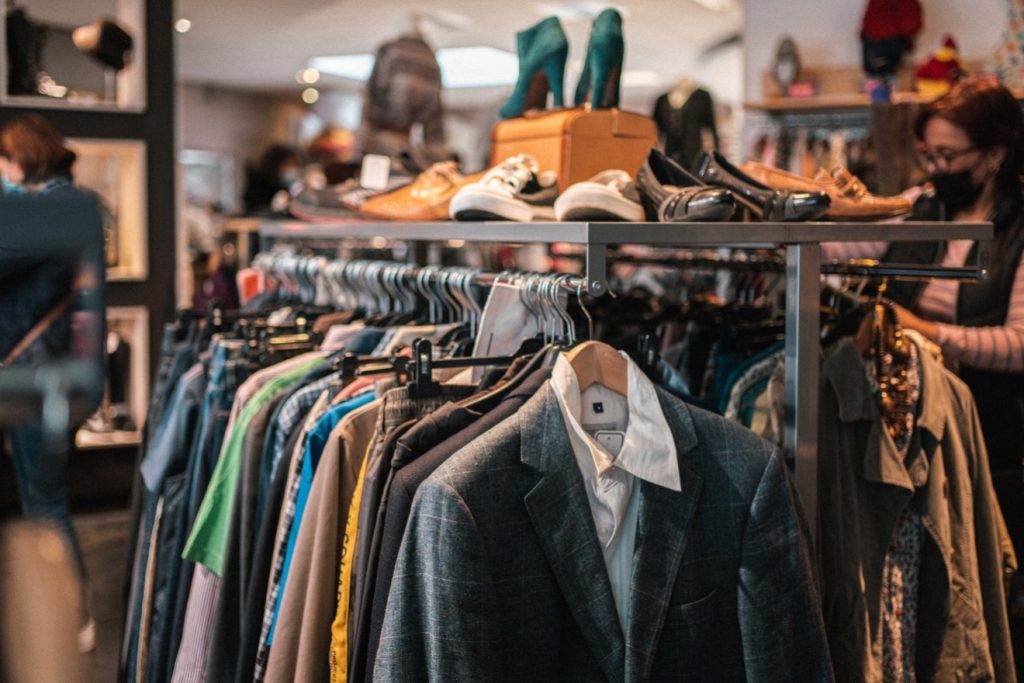By ESG Analyst Léa Buré

Who doesn’t like the excitement of thrift shopping? Going into one of Montreal’s plentiful thrift stores having no expectation of what you may find and ending up finding the perfect vintage jacket or cozy sweater… The second-hand thrifting trend has been around for a long time but has gained considerable popularity thanks to TikTok and the hashtag #ThriftTok. Social media have turned thrifting into a whole new fashion trend.
At first glance, the rise of this thrifting trend appears as good news – a step away from fast fashion towards eco-friendly fashion. Indeed, buying second-hand clothes remains undeniably more sustainable than shopping from fast fashion brands. However, thrifting may not be as sustainable and environmentally friendly as it appears. We will therefore shed light on the broader implications of thrift shopping.
A sustainable alternative to fast fashion
In the era of capitalism and mass consumption since the 2000s, people have increasingly turned towards fast fashion – mass-produced, low-priced items, manufactured quickly and seen as “trendy.” Many scandals have sparked since then, questioning the environmental and social impacts associated with the supply chain of fast fashion brands (I invite you to read this article on supply chain management governance in the fashion industry).
As a consequence, consumers now see second-hand shopping as a sustainable solution and alternative to fast fashion.
Avoiding major emissions associated with fast fashion production
In addition to offering more affordable clothing options, thrift stores also extend the life of items, thus decreasing the demand for the production of brand-new garments. Decreasing the demand for fast fashion is crucial considering the tremendous environmental impact of a simple shirt. Indeed, the production of one cotton shirt uses nearly 700 gallons of water and the process of dying clothing releases toxic residuals into clean water resources.
Overlooked socio-environmental implications of thrifting
Social ethics of thrifting
Thrift stores’ high levels of popularity have led to a shift in the type of customers shopping for second-hand clothing. Indeed, Goodwill, Renaissance, or Value Village originally targeted people with limited financial means, who could not afford new clothes. However, the affluence of middle- and upper-class customers in thrift stores has led to an increase in prices, thus ‘marginalizing populations that depend on thrifting clothes the most’. This phenomenon of “thrift store gentrification” makes once-affordable clothing inaccessible to those who need it most. Furthermore, more affluent customers do not only buy second-hand clothes to meet their own needs. Some of them purchase items in massive amounts for resale purposes, enhancing this gentrification phenomenon. In other words, there are increasing concerns that the trendiness of thrifting among wealthier customers will cut off important resources for low-income populations.
Where do unsold second-hand clothes go?
According to the journalist Sarah Watson, Goodwill sells only 10-20% of the clothes donations it receives. The remaining items are exported overseas, principally to Poland, Ghana, or Pakistan. Shipping second-hand clothing comes not only with the environmental cost – associated with the greenhouse gas emission of transportation – but also with a social cost for people in developing countries. For instance, second-hand clothes from developed countries overflow Mozambique’s market stalls. Even though they remain cheaper than new clothes, the unpredictability of their quality makes selling these items a risky livelihood for Mozambican merchants. Also, the massive imports of used clothes undermine the local clothing industry – cutting jobs in factories.
Is thrifting the best solution for a sustainable approach to fashion?
To conclude, thrifting does not treat the problem of overconsumption in the fashion industry. The large stocks of second-hand clothes in thrift stores rely on how quickly people cycle to trends, buy new clothes, and donate old ones. The popularity of thrift stores illustrates the rebound effect. Indeed, items’ low prices fuel overconsumption from individuals buying more items than they need – either for their own consumption or for reselling. In other words, thrifting does present a sustainable alternative to fast fashion in the short term, but might not stop clothes’ overproduction and its dependency on consumerist culture.
The solution for a more sustainable approach to fashion might therefore lie in upcycling items in your own wardrobe rather than dumping loads of clothing donations and replacing them with thrifted items.
https://greenly.earth/en-us/blog/ecology-news/all-you-need-to-know-about-fast-fashion
https://wp.nyu.edu/mercerstreet/2022-2023/the-ethics-of-thrifting/
https://www.vox.com/the-goods/22396051/thrift-store-hauls-ethics-depop
https://unsplash.com/fr/photos/un-porte-vetements-et-de-chaussures-dans-un-magasin-JGtPrdnMgQc
